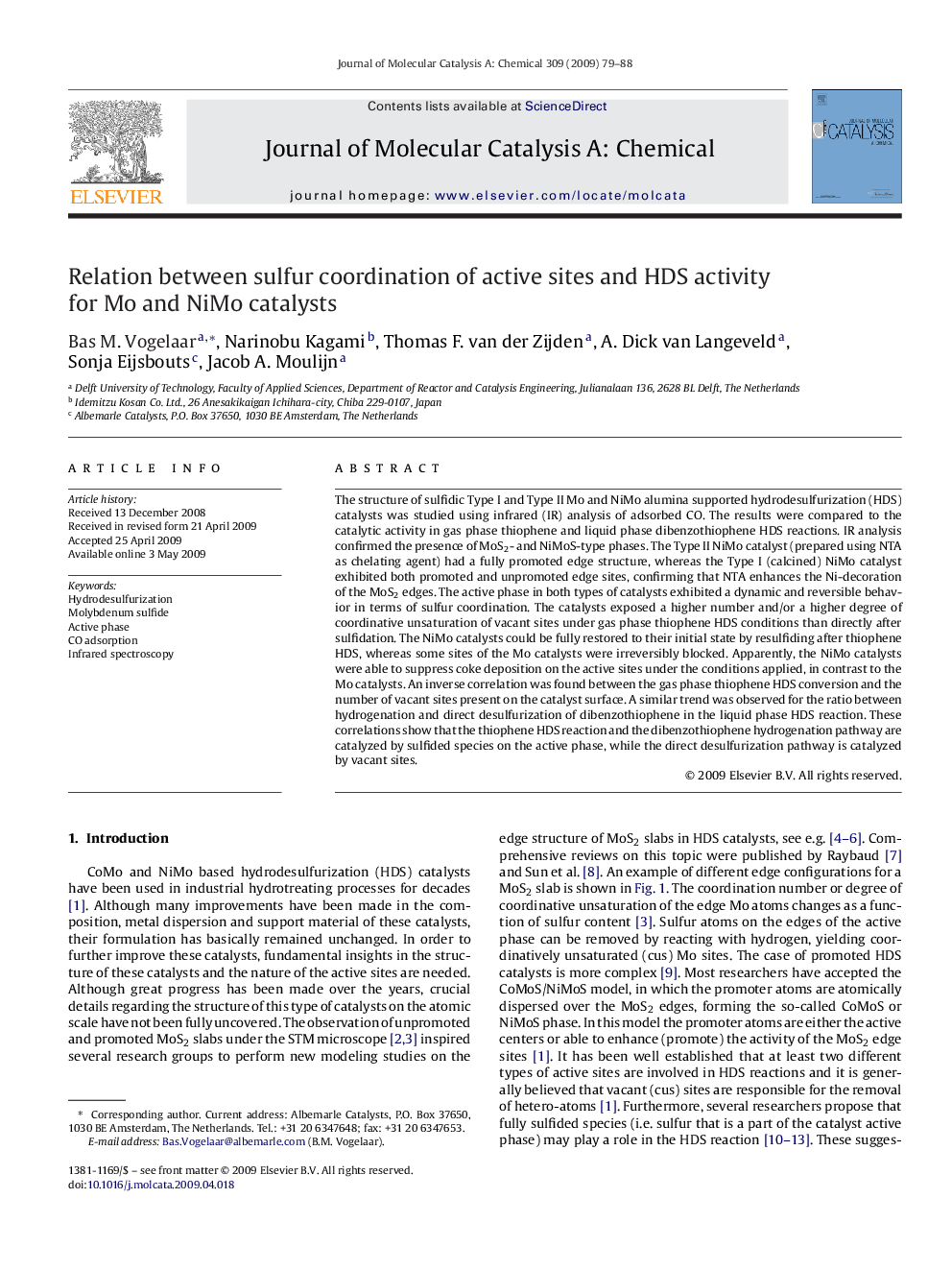| کد مقاله | کد نشریه | سال انتشار | مقاله انگلیسی | نسخه تمام متن |
|---|---|---|---|---|
| 67400 | 48481 | 2009 | 10 صفحه PDF | دانلود رایگان |

The structure of sulfidic Type I and Type II Mo and NiMo alumina supported hydrodesulfurization (HDS) catalysts was studied using infrared (IR) analysis of adsorbed CO. The results were compared to the catalytic activity in gas phase thiophene and liquid phase dibenzothiophene HDS reactions. IR analysis confirmed the presence of MoS2- and NiMoS-type phases. The Type II NiMo catalyst (prepared using NTA as chelating agent) had a fully promoted edge structure, whereas the Type I (calcined) NiMo catalyst exhibited both promoted and unpromoted edge sites, confirming that NTA enhances the Ni-decoration of the MoS2 edges. The active phase in both types of catalysts exhibited a dynamic and reversible behavior in terms of sulfur coordination. The catalysts exposed a higher number and/or a higher degree of coordinative unsaturation of vacant sites under gas phase thiophene HDS conditions than directly after sulfidation. The NiMo catalysts could be fully restored to their initial state by resulfiding after thiophene HDS, whereas some sites of the Mo catalysts were irreversibly blocked. Apparently, the NiMo catalysts were able to suppress coke deposition on the active sites under the conditions applied, in contrast to the Mo catalysts. An inverse correlation was found between the gas phase thiophene HDS conversion and the number of vacant sites present on the catalyst surface. A similar trend was observed for the ratio between hydrogenation and direct desulfurization of dibenzothiophene in the liquid phase HDS reaction. These correlations show that the thiophene HDS reaction and the dibenzothiophene hydrogenation pathway are catalyzed by sulfided species on the active phase, while the direct desulfurization pathway is catalyzed by vacant sites.
The structure of Mo and NiMo HDS catalysts was studied using IR analysis of adsorbed CO. The Type II NiMo catalyst had a fully promoted structure, whereas the Type I NiMo catalyst exhibited both promoted and unpromoted sites. An inverse correlation was found between thiophene conversion and the number of vacant sites present on the catalyst surface. A similar trend was observed for the ratio between hydrogenation and direct desulfurization of dibenzothiophene, showing that the hydrogenation pathway is catalyzed by sulfided species on the active phase, while the direct desulfurization pathway is catalyzed by vacant sites.Figure optionsDownload as PowerPoint slide
Journal: Journal of Molecular Catalysis A: Chemical - Volume 309, Issues 1–2, 18 August 2009, Pages 79–88